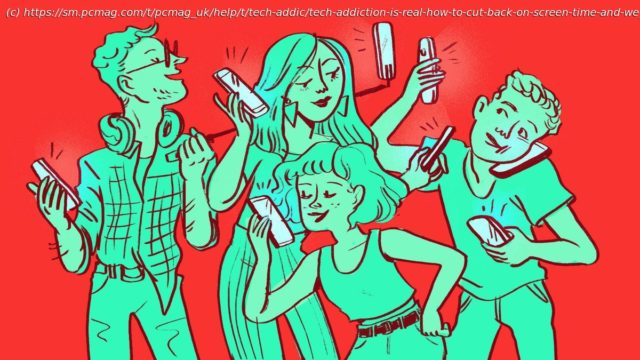Going cold turkey with technology isn’t realistic in our hyper-connected world, but there are ways to modulate usage and take back control of your apps and devices.
How often do you look at your phone a day? According to an Asurion study, the 2022 average was 253 times per day. We also spend 36 days on social media each year.
It’s all too easy to get lost in our screens as we tap from app to app and scroll through social feeds. Unless you’re ready to drop off the grid and move to a log cabin in the woods, cutting tech out of your life completely is unrealistic. What you can do is try consuming tech more mindfully. Modern devices and social media apps are designed to keep you engaged, but there are ways to take back control of your tech.
Are you dealing with a deluge of notifications from emails, messages, Snapchat, Instagram, Slack, and dozens of other apps? Cut out the noise by changing the default settings.
Go into the notification settings on all your devices—smartphones, tablets, desktops, and laptops—and turn off everything you see as nonessential. For instance, disable the notification dots that appear next to your app icons and beg you to check them. Or change settings for individual apps to customize what events on Facebook warrant a ping, for example.
Apple iPhone users have a feature called Focus Mode, which is essentially a revamped version of Do Not Disturb (DND) that allows you to disable certain functionality at specific times of the day. It includes the traditional DND, but also specific modes for sleep, personal time, and work.
Android has its own Focus Mode under Settings > Digital Wellbeing & parental controls, where you can set up a schedule for when distracting apps will be unavailable to use.
On the computer, Mac users have a version of Focus Mode, while Focus Assist on Windows can ban notifications under specific criteria. Windows 11 users have an additional Focus Sessions productivity feature.
There are also third-party options like Freedom and the StayFocusd extension, which temporarily block apps and websites for set periods of time. Extensions can also help you use sites like Facebook and YouTube in more targeted ways. Distraction Free YouTube removes recommended videos from sidebars to keep you from getting sucked in. News Feed Eradicator blurs out Facebook posts for users who want to use the app only as a utility for things like events and groups. The Facebook Demetricator extension hides like, comment, and share numbers to keep you from fixating on feedback.
App and device makers have their own solutions to address tech addiction. For iPhone users, Screen Time tracks your app usage and lets you put limits on certain types of apps. A feature called Downtime can also help avoid phone usage by locking certain apps and phone features at a schedule time of day.
On Android, Google’s Digital Wellbeing app displays a dashboard breaking down app usage, how often you unlock your phone, and how many notifications you receive. For those with Galaxy devices, Samsung offers its own digital wellbeing feature.






